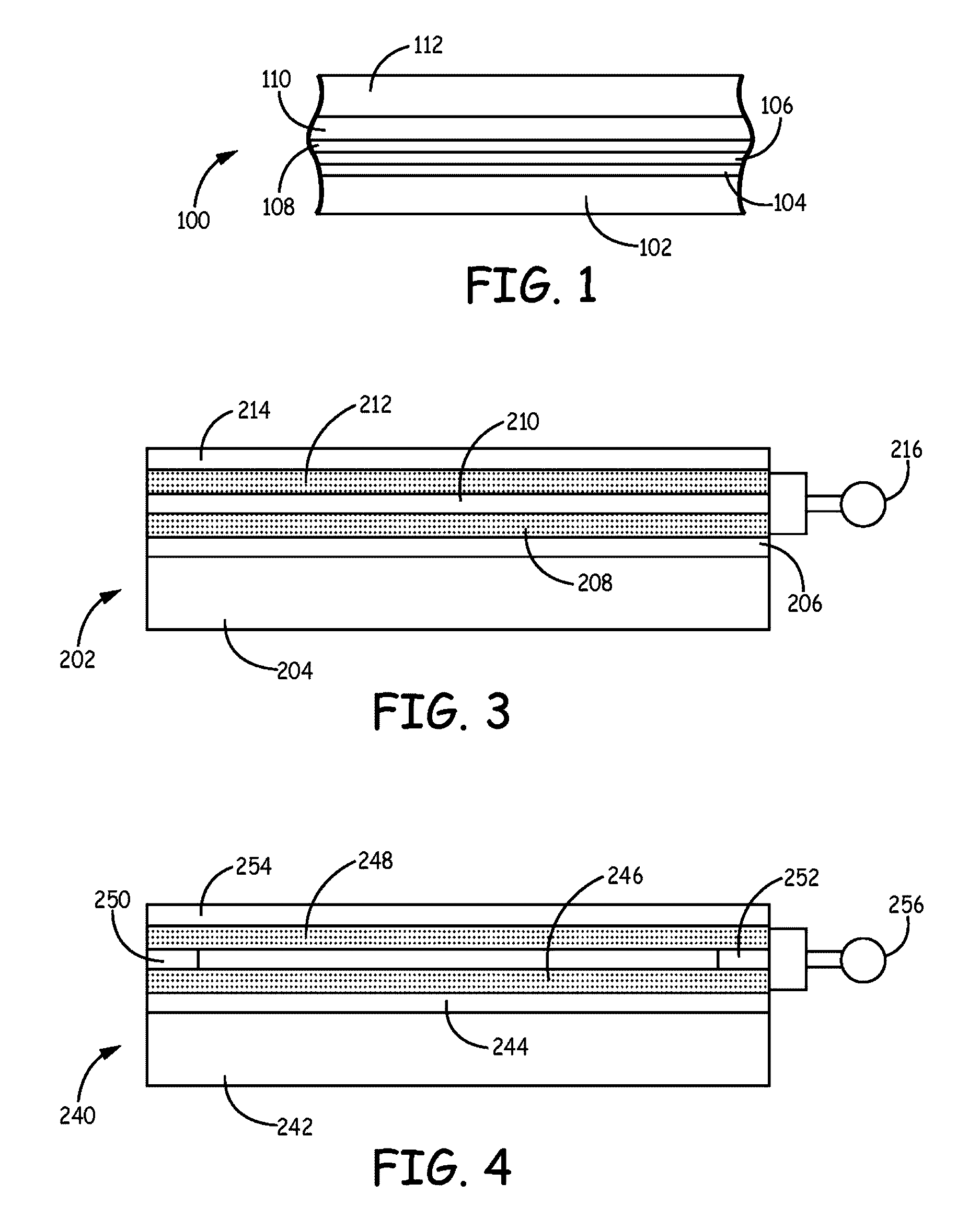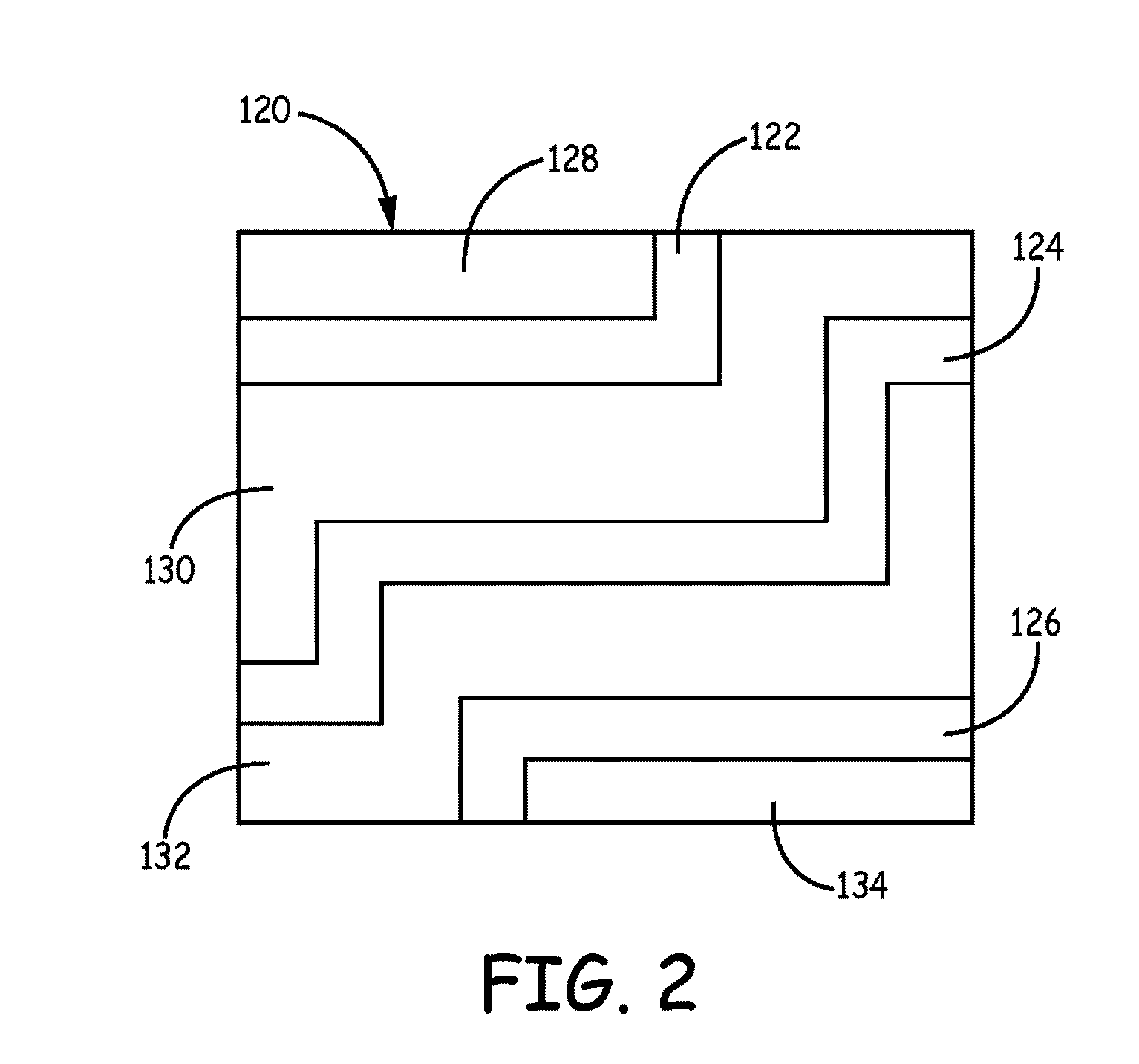Transparent polymer hardcoats and corresponding transparent films
a technology of transparent polymer and hardcoat, applied in the field of polymer hardcoat, can solve the problems of high temperature and vacuum, easy cracking of flexible substrates, and high cost of high-temperature vacuum
- Summary
- Abstract
- Description
- Claims
- Application Information
AI Technical Summary
Benefits of technology
Problems solved by technology
Method used
Image
Examples
example 1
Hardcoats on Polymer Substrate—Comparison with Commercial Hardcoats
[0129]This example compares the pencil hardness of the newly formulated hardcoats in comparison with commercial hardcoats on bare polymer substrates.
[0130]The coatings were formed as described above and were cured at an energy of at 1.0 J / cm2 with Heraeus DRS10 / 12QN Fusion UV System. Table 3 compares several commercial transparent hardcoat's hardness where each has an average dry thickness of 4-9 microns. The newly formulated hardcoats described herein had comparable hardness as the commercial hardcoats on the bare polymer substrates. Also, pencil hardness was evaluated with nanodiamonds (ND) loaded into the hardcoat. The hardcoats loaded with the nanodiamonds at roughly 0.01-0.5 wt % had significantly increased pencil hardness.
TABLE 3ManufacturerHardnessKriya Materials (Netherlands)3H on PETDymax (CT, USA)3H on PETAddison Clear Wave (IL, USA)5H on PETDexerials (Japan)3H on PETHOC13-4H on PETHOC1 + nanodiamonds8-9H o...
example 2
Performance and Comparison of Formulated Hardcoats and Commercial Hardcoats on Transparent Conductive Films
[0131]In this example, the performance of formulated overcoats and commercial overcoats are examined on a film over a fused metal nanostructured conductive network.
[0132]The substrate was prepared with a fused metal conductive layer as described above. The substrate with the conductive layer had an initial haze of 0.72%, an initial TT % of about 91% and a sheet resistance of about 50 ohms / sq. The hardcoat precursor solutions were diluted to yield a target dry coating thickness and were deposited onto the substrate by slot coating at 1 mil (25.4 microns) wet thickness. The films were then dried with a heat gun and cured with UV light under nitrogen using Heraeus DRS10 / 12QN Fusion UV System at 60% power with speed of 25 ft / min. The solid content of the coating solution correlates with the thickness of the dried film, and the films formed with coating solutions as specified in Tab...
example 3
Performance of Thicker HOC1 Hardcoat (2-10 μm) on Polymer Film Substrate
[0135]This example tests the performance of a thicker formulated hardcoat at various thickness (˜1-10 μm) on three polymer substrates.
[0136]A first set of samples was prepared on a commercial 125 micron thick PET transparent film having a hardcoat on one side of the PET layer (GS01) in which the test hardcoat is applied to the other side of the film. A second set of samples were prepared on a commercial 50 micron thick PET film (Kimoto) having hardcoats on both sides of the film (G1SBF), in which the test hardcoat is applied on one side of the film. A third set of samples was prepared on a commercial 50 micron thick film (MSK) having a hardcoat on both sides of the film, in which the test hardcoat is applied on one surface. For each substrate, three samples were formed using a formulated overcoat HOC1 at concentrations of 10%, 20% and 50% by weight, slot coated to an estimated dry thickness of 2 microns, 5 micro...
PUM
| Property | Measurement | Unit |
|---|---|---|
| weight percent | aaaaa | aaaaa |
| particle size | aaaaa | aaaaa |
| weight percent | aaaaa | aaaaa |
Abstract
Description
Claims
Application Information
 Login to View More
Login to View More - R&D
- Intellectual Property
- Life Sciences
- Materials
- Tech Scout
- Unparalleled Data Quality
- Higher Quality Content
- 60% Fewer Hallucinations
Browse by: Latest US Patents, China's latest patents, Technical Efficacy Thesaurus, Application Domain, Technology Topic, Popular Technical Reports.
© 2025 PatSnap. All rights reserved.Legal|Privacy policy|Modern Slavery Act Transparency Statement|Sitemap|About US| Contact US: help@patsnap.com



